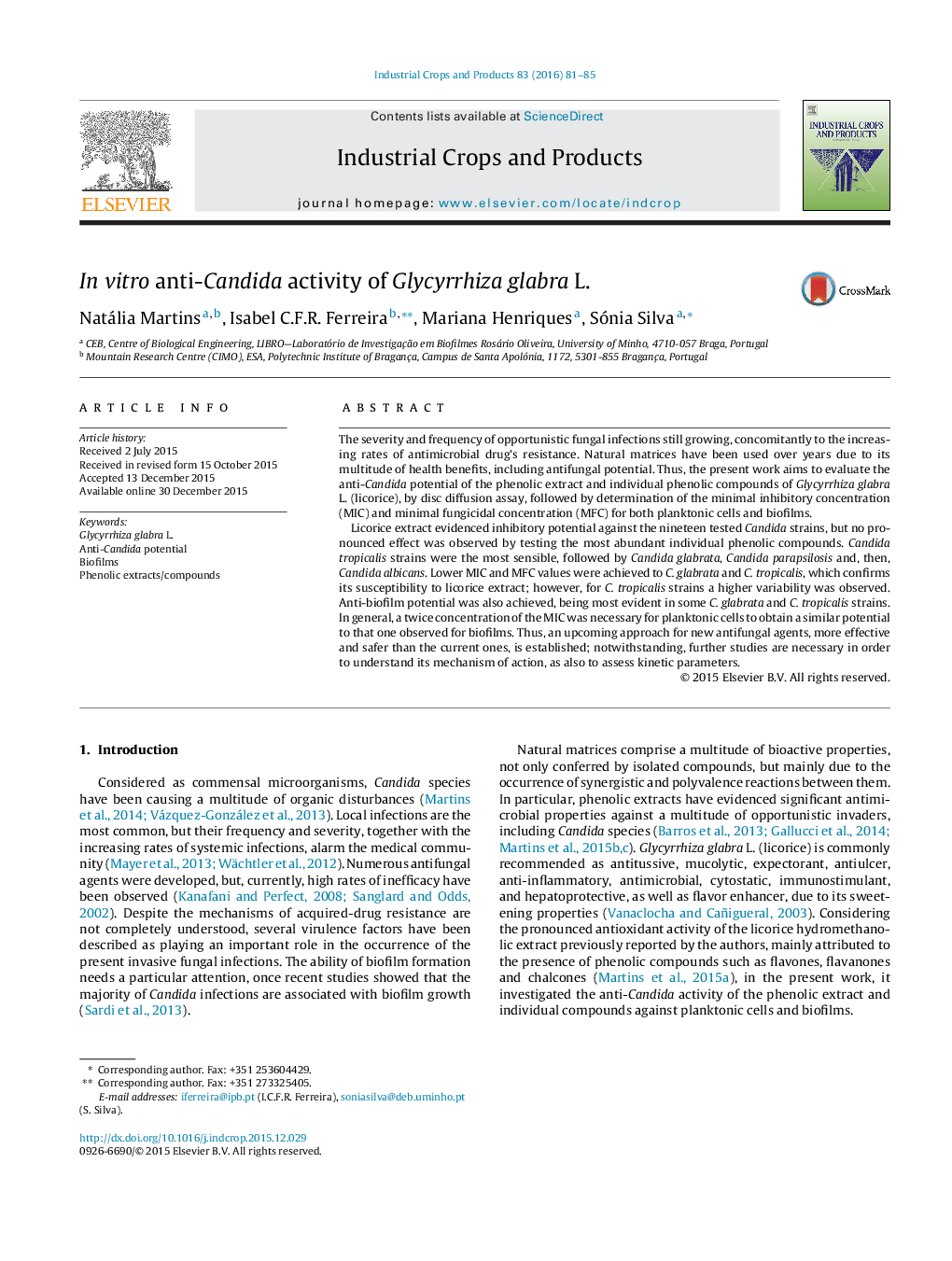| Article ID | Journal | Published Year | Pages | File Type |
|---|---|---|---|---|
| 4512297 | Industrial Crops and Products | 2016 | 5 Pages |
•Anti-Candida potential of licorice phenolic extract in planktonic cells and biofilms.•Pronounced growth inhibition of both Candida reference strains and clinical isolates.•Licorice extract was more effective than individual phenolic compounds.•Candida biofilms evidenced a higher resistance than planktonic cells.•Synergic interactions appears to be responsible for the observed anti-Candida effect.
The severity and frequency of opportunistic fungal infections still growing, concomitantly to the increasing rates of antimicrobial drug’s resistance. Natural matrices have been used over years due to its multitude of health benefits, including antifungal potential. Thus, the present work aims to evaluate the anti-Candida potential of the phenolic extract and individual phenolic compounds of Glycyrrhiza glabra L. (licorice), by disc diffusion assay, followed by determination of the minimal inhibitory concentration (MIC) and minimal fungicidal concentration (MFC) for both planktonic cells and biofilms.Licorice extract evidenced inhibitory potential against the nineteen tested Candida strains, but no pronounced effect was observed by testing the most abundant individual phenolic compounds. Candida tropicalis strains were the most sensible, followed by Candida glabrata, Candida parapsilosis and, then, Candida albicans. Lower MIC and MFC values were achieved to C. glabrata and C. tropicalis, which confirms its susceptibility to licorice extract; however, for C. tropicalis strains a higher variability was observed. Anti-biofilm potential was also achieved, being most evident in some C. glabrata and C. tropicalis strains. In general, a twice concentration of the MIC was necessary for planktonic cells to obtain a similar potential to that one observed for biofilms. Thus, an upcoming approach for new antifungal agents, more effective and safer than the current ones, is established; notwithstanding, further studies are necessary in order to understand its mechanism of action, as also to assess kinetic parameters.
